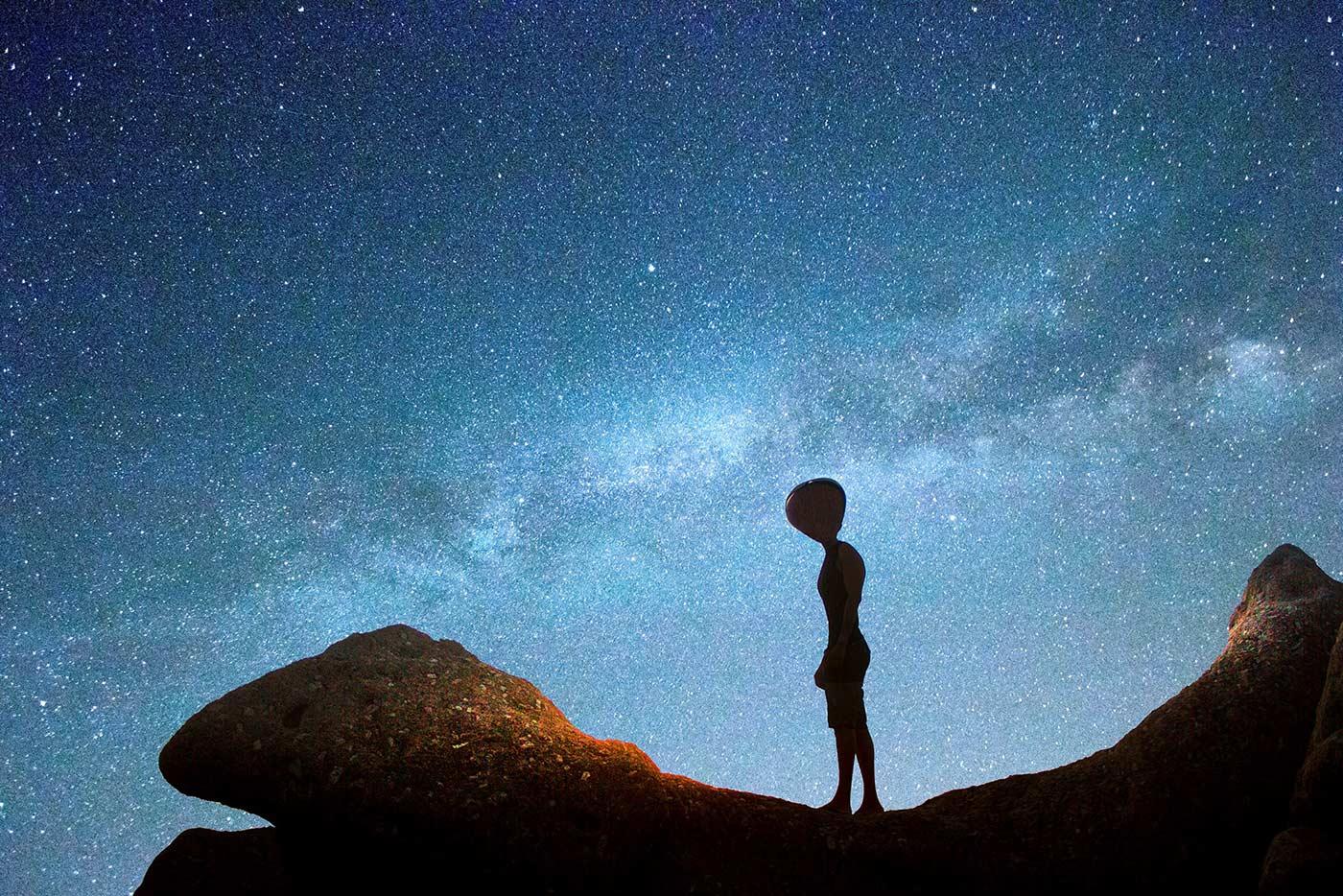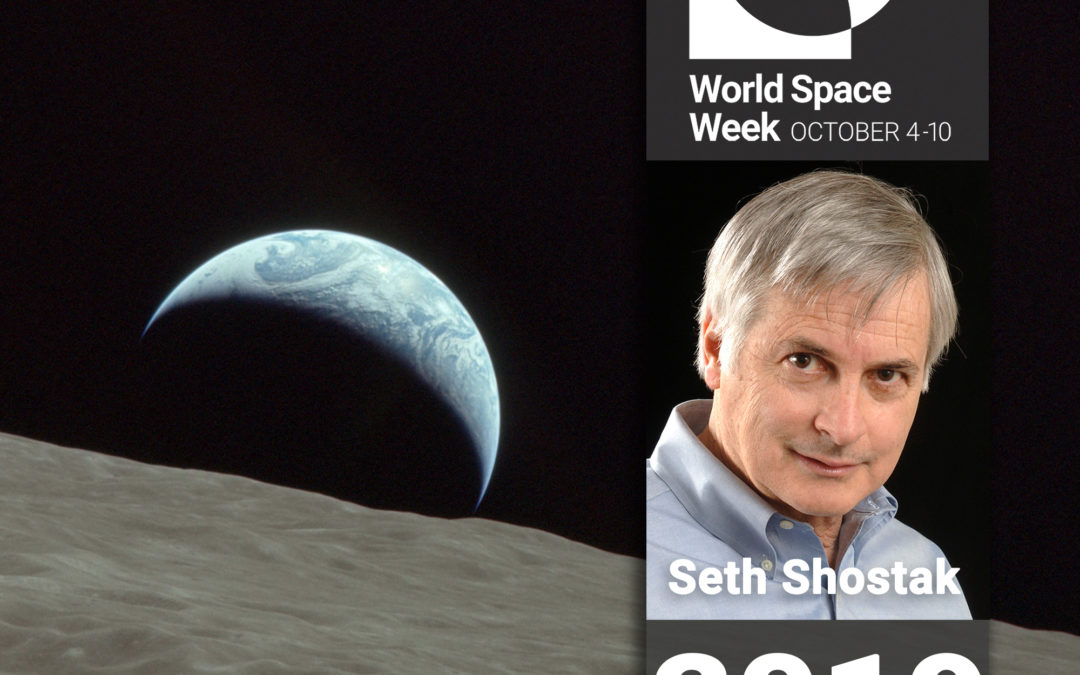
Humans continue to develop new technologies that let us explore the universe and we have become increasingly adept at detecting planets beyond our own Solar System. It seems reasonable to wonder if we’re the only ones exploring the stars. Seth Shostak, Senior Astronomer at the SETI Institute, pondered this notion in a recent article for NBC News MACH:
It seems a safe bet that if advanced aliens do exist in our galaxy, they would at least know our planet is here. If human astronomers can find thousands of worlds in two dozen years, how many exoplanets —planets around other stars — will the denizens of other solar systems find in, say, a millennium of slogging away?
Shostak notes that researchers have recently detected water vapor on a planet 110 light-years away using spectroscopy – if we can achieve that, what might an extraterrestrial species accomplish over an even greater timescale?
- NBC News MACH: We keep looking for space aliens. Are they looking for us?
 High School Physics Class Explore the Drake Equation
High School Physics Class Explore the Drake EquationDan Peluso is a high school physics teacher who recently gave his students a fun project to learn about science and explore their creativity. They created a mural of the Drake Equation on the side of their classroom. Peluso was inspired after visiting Senior Planetary Astronomer Franck Marchis at the SETI Institute’s Mountain View headquarters over the summer:
The inspiration for this project came last summer during my first visit to the SETI Institute in Mountain View, CA to meet with my new PhD advisor, Franck Marchis. During this visit, I was drawn to the Drake equation artwork in the lobby’s entrance. I first learned about the Drake equation years ago when I went back to school for science and was immediately fascinated by the idea of SETI and the idea of looking for life elsewhere in the cosmos.
The Drake Equation was created by Frank Drake as a framework for discussing the prevalence of technologically advanced species in the universe. Peluso’s students formed groups to research and come up with designs for each part of the equation. To the student’s delight, several SETI Institute researchers volunteered to speak to each group. Marchis, as well as Pascal Lee, Douglas Caldwell, Margaret Race, and Dana Backman each shared how their research contributes to understanding the factors of the equation:
Franck suggested that we try to get some SETI researchers to have a live videoconference with my classes to talk about how their work contributes to the Drake equation. The response from the SETI Institute was fantastic and we were able to get one SETI researcher to videoconference with each of my sections!
… This was very exciting for both me and my students. Many of my students told me that they had never experienced this, i.e. having a professional scientist videoconference their class.
Peluso also wrote a blog post about seeing the upside of the recent intentional blackouts PG&E initiated across California – dark skies for looking at the stars.
- Cosmic Diary – Dan Peluso: Drake Equation Mural in a High School Physics Class
- Cosmic Diary – Dan Peluso: Blackout Lights Out in California? Time to look at the positive and up at the cosmos!
 Seth Shostak on World Space Week
Seth Shostak on World Space WeekSeth Shostak appeared on the World Space Week podcast to talk about the search for intelligent life on other worlds and his work to get the public interested in science and astrobiology. Shostak is the Senior Astronomer at the SETI Institute and is an active participant in SETI observation programs.
If you enjoy the interview on World Space Week, check out Shostak’s podcast, Big Picture Science, recorded at the SETI Institute’s headquarters in Mountain View, California.
 Teachers Board SOFIA
Teachers Board SOFIAThe Northside Independent School District’s weekly newsletter featured a celebratory mention of four local teachers selected to participate as Airborne Astronomy Ambassadors. The SETI Institute’s NASA Airborne Astronomy Ambassador Program (AAA) is an exciting STEM immersion experience designed to help educators bring the thrill of hands-on research to the classroom. Selected teachers received professional development training, including webinars and in-person workshops. The teachers - Lauren Malik, Terrence Martin, Melissa Pagonis, and Anne Schnabel – spent a week in Palmdale, CA., and had the opportunity to fly aboard SOFIA, a highly modified Boeing 747SP airliner equipped to study celestial objects at infrared wavelengths.
- Inside Northside Weekly: Teachers Reach for the Stars
In last week’s episode, we faced the rise of the superbugs in Battling Bacteria. Previously, new theories and surprises were revealed on Easter Island in Headed for Trouble.
Last time on Facebook Live, Simon Steel, Senior Director of Education and STEM Programs, interviewed Senior Research Scientist Janice Bishop about martian rocks. Videos of all past Facebook Live events can be found on our Facebook page: https://www.facebook.com/SETIInstitute/





